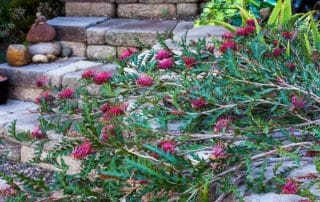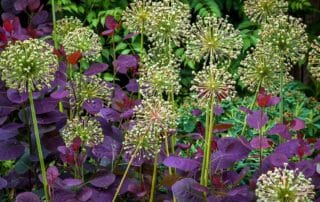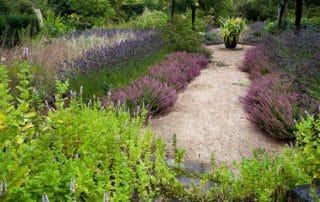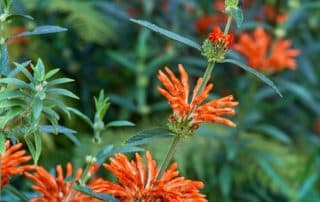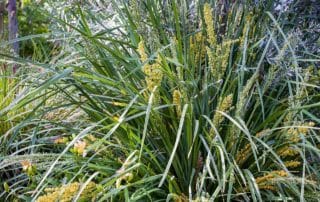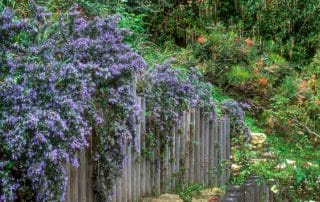Descriptions with photos of garden plants suitable for summer-dry gardens.
Grevillea ‘Austraflora Fanfare’
Dozens of grevilleas have moved in and out of the nursery trade over the years, mostly medium to large shrubs and a few mounding groundcovers with needlelike, narrowly oval, or finely divided leaves and intriguing flowers typically described as either "spidery" or brushlike. Grevillea ‘Austraflora Fanfare’ Grevillea 'Austraflora Fanfare' is distinctive for its nearly flat, widespreading habit and its long, dark green leaves deeply lobed in sawtooth fashion. Less than a foot tall and spreading 10-15 feet wide, the dense foliage drapes over walls and cascades down banks, prominently displaying the pinkish red, one-sided, brushlike flowers from late


